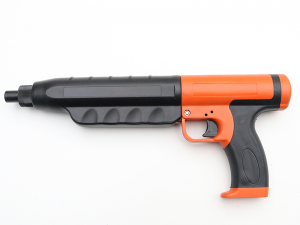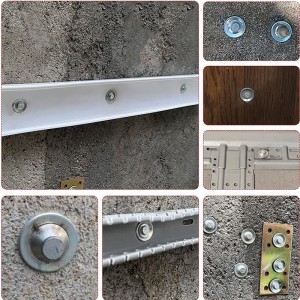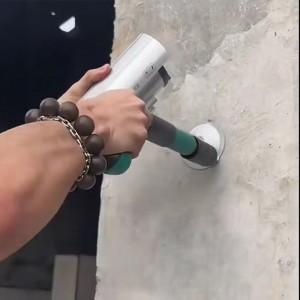The speed of nails by direct-acting nail guns is more than 3 times that of nails by indirect-acting nail guns. The energy generated by indirect-acting nail guns when firing the nail cartridge is divided into two parts: the energy to drive the nail and the energy to drive the piston rod, the latter of which accounts for the vast majority. Since the piston rod can only move in the barrel, the operator can control its direction through the nail gun. When the nail contacts the substrate, it encounters resistance, causing the speed to slow down, and the piston rod transfers energy to the nail to fix the nail. If the power of the selected nail barrel is too large, resulting in excessive energy, the nail penetrates too deep, the piston rod will be immediately blocked by the nail barrel and the stop ring, and neither the nail nor the piston can move. At this time, all the excess energy is consumed by the nail gun. Due to the different principles and structures of direct-acting nail guns and indirect-acting nail guns, their use effects are very different. The weaknesses of direct-acting nail guns are more obvious; in some time, not only is the fixing reliability poor, but it is also easy to damage the substrate structure, which may cause personal safety accidents in serious cases.
Therefore, unless there are special circumstances, don’t used the direct-acting nail guns in generally, usually using the indirect-acting nail guns, which are much more reliable and safer. According to the purpose, some nail guns are specially used in the metallurgical industry to repair steel ingot molds, fix insulation boards, hang signs, etc., so they are called special nail guns. Some nail guns are suitable for various industries, so they are called general-purpose nail guns.
Operation requirements:
1. Operators must be trained and familiar with the performance, function, structural characteristics, and maintenance methods of each component. Unauthorized personnel are not allowed to operate this equipment.
2. The nail gun must be thoroughly inspected before operation. The gun casing and handle should be free of cracks and damage; all protective covers should be intact and firm, and the safety devices should be reliable.
3. It is strictly forbidden to push the nail tube with your palm or point the gun muzzle at people.
4. When shooting, the nail gun should be pressed vertically on the work surface. If the trigger is pulled twice and the nail barrel is not fired, the operator should maintain the original shooting posture for a few seconds before removing the nail barrel.
5. There must not be any nail cartridges in the nail gun before replacing parts or disconnecting the gun.
6. Overloading is strictly prohibited. During operation, attention should be paid to the sound and temperature increase. If any abnormality is found, stop using it immediately and check it.
7. Nail guns and their accessories (including shells, gunpowder, and nails) must be stored separately and kept by a designated person. Users must accurately distribute and recycle all remaining and used shells according to the quantity on the receipt to ensure consistency in distribution and recycling.
8. The insertion point should not be too close to the edge of the building (at least 10 cm) to prevent injuries from breaking of wall components.
9. It is strictly forbidden to start fires in flammable and explosive areas, to work on fragile and hard materials such as marble, granite, cast iron, etc., and to work on penetrable buildings and steel plates.
Post time: Nov-20-2024











